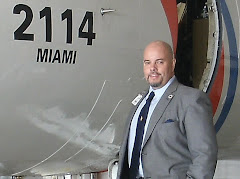

 AIRFORCES, Inc. Reports: The president of Guyana is commander in chief of the GDF. The GDF is organized into approximately twenty corps whose activities ranged from training to intelligence to catering and musical performance. Service in the GDF is voluntary, and its membership is overwhelmingly Afro-Guyanese. Women were accepted into the service but constituted only a small percentage of the total force.
AIRFORCES, Inc. Reports: The president of Guyana is commander in chief of the GDF. The GDF is organized into approximately twenty corps whose activities ranged from training to intelligence to catering and musical performance. Service in the GDF is voluntary, and its membership is overwhelmingly Afro-Guyanese. Women were accepted into the service but constituted only a small percentage of the total force.
The air wing of the GDF was created in 1968. In 1970 it was redesignated the Air Command, GDF. The 200-member Air Command is headquartered at Camp Ayanganna in Georgetown. In the early 1990s, it's aircraft helicopters operated from Georgetown's Timehri Airport. The command's primary missions are transportation, communications, and liaison. Secondary missions include counter narcotics and maritime patrolling.
Currently the GDF Air Command's operates a variety of aircraft. Only one Shorts Skyvan remains in service and is operated alongside a Harbin Y-12 Turbo Panda, acquired from the Chinese aircraft manufacturer in early 2002. For many years, a Bell 412 was the sole helicopter in use with the GDF, until it was augmented by a pair of Rotorway Exec 162F helicopters in 2004 and 2005, which were locally assembled.






 AIRFORCES Inc. Reports: Back in 1992, nine years after
AIRFORCES Inc. Reports: Back in 1992, nine years after 


















 Sandinist president Daniel Ortega inherited a poor country with high rates of homelessness, illiteracy and insufficient health care. The new government established farming cooperatives, waged an education campaign and introduced an immunization program. However, military ties with revolutionary countries like Cuba and the Soviet Union were tightened, initializing huge investments in the Nicaraguan military infrastructure. As soon as 1980, the Sandinist government sent seventy cadets to Bulgaria for pilots training. Russian and Cuban advisors and construction teams were flown in to expand the military infrastructure, resulting in the construction and improvement of many airbases.
Sandinist president Daniel Ortega inherited a poor country with high rates of homelessness, illiteracy and insufficient health care. The new government established farming cooperatives, waged an education campaign and introduced an immunization program. However, military ties with revolutionary countries like Cuba and the Soviet Union were tightened, initializing huge investments in the Nicaraguan military infrastructure. As soon as 1980, the Sandinist government sent seventy cadets to Bulgaria for pilots training. Russian and Cuban advisors and construction teams were flown in to expand the military infrastructure, resulting in the construction and improvement of many airbases.





























